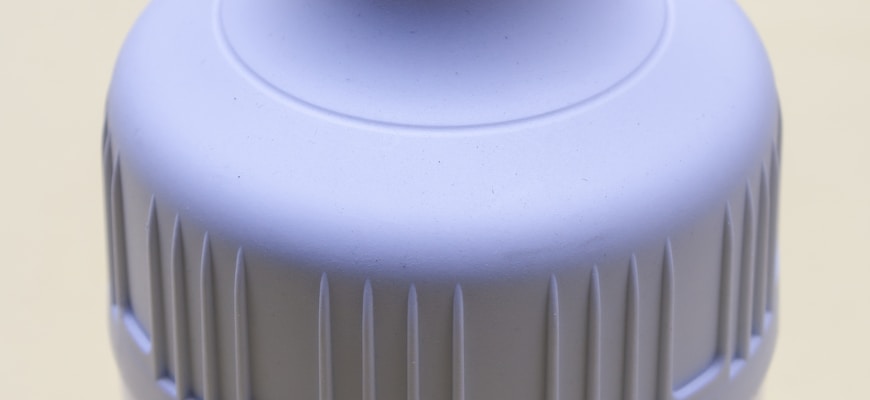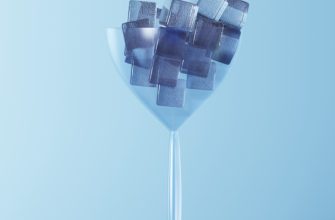- Exploring Quartz Lamps: A Revolutionary Approach to Water Purification
- Next-Generation Filters: Innovations in Filtration Technology
- The Science Behind Additional Cleaning Methods: Enhancing Purity
- From UV Light to Advanced Filtration: The Future of Water Treatment
- Comparative Analysis: Traditional vs. Modern Purification Techniques
- Sustainable Solutions: Eco-Friendly Practices in Water Cleaning
Exploring Quartz Lamps: A Revolutionary Approach to Water Purification
Quartz lamps represent a groundbreaking technology in the realm of water purification. Utilizing ultraviolet (UV) light, these innovative devices effectively eliminate harmful microorganisms, bacteria, and viruses present in water sources. Unlike traditional filtration methods, quartz lamps do not rely on physical barriers; instead, they harness the power of light to neutralize contaminants, ensuring clean and safe drinking water.
The process of water purification through quartz lamps involves exposing water to UV light, which disrupts the DNA of pathogens, rendering them inactive. This method of purification is not only efficient but also environmentally friendly, as it does not introduce any chemicals into the water. As awareness of waterborne diseases grows, the adoption of quartz lamps becomes increasingly vital for both household and industrial applications.
- Efficiency: Quartz lamps achieve rapid disinfection, often within seconds.
- Cost-Effectiveness: Once installed, quartz lamps require minimal maintenance and operational costs.
- Environmentally Safe: The UV process leaves no chemical residues, making water safe for consumption.
- Versatility: Suitable for various applications, including municipal water systems, aquariums, and residential setups.
In conclusion, exploring quartz lamps as a method for water purification reveals a revolutionary approach to ensuring water safety. By integrating quartz lamp technology into water treatment solutions, users can benefit from a reliable, efficient, and eco-friendly purification process. As the demand for clean water continues to rise, embracing quartz lamps alongside advanced filtration systems represents a significant step toward a healthier future.
Next-Generation Filters: Innovations in Filtration Technology
Innovations in filtration technology have led to the development of next-generation filters that significantly enhance water purification processes. These advanced filtration systems utilize cutting-edge materials and techniques to improve efficiency and effectiveness in removing contaminants. The modern filtration solutions are designed not only for residential use but also for industrial applications, ensuring a broad spectrum of usability.
- Membrane Filtration: Utilizing semipermeable membranes, this method effectively separates particles, bacteria, and viruses from water, providing high-quality output.
- Nanotechnology: Filters incorporating nanomaterials offer superior filtration capabilities, targeting even the smallest impurities at the molecular level.
- Activated Carbon Filters: These filters enhance the removal of organic compounds and chlorine, improving taste and odor while ensuring clean drinking water.
- UV-C Light Technology: By using ultraviolet light, this technology disinfects water by inactivating harmful microorganisms without the use of chemicals.
- Smart Filtration Systems: Equipped with IoT capabilities, these systems allow for real-time monitoring and automation, optimizing the filtration process for various water qualities.
Next-generation filters are not just about efficiency; they also focus on sustainability. Many of these advanced solutions are designed to minimize waste and energy consumption, thereby supporting eco-friendly practices. As water quality standards continue to evolve, the demand for innovative filtration technologies will only increase, paving the way for further advancements in this critical sector.
In conclusion, the integration of these state-of-the-art filtration methods represents a significant leap forward in ensuring clean and safe water for all. As the industry continues to innovate, next-generation filters will play an essential role in meeting the challenges of water purification in the modern world.
The Science Behind Additional Cleaning Methods: Enhancing Purity
Дополнительные методы очистки воды становятся все более популярными благодаря своей способности повышать чистоту и безопасность питьевой воды. Использование современных технологий, таких как кварцевые лампы и фильтры нового поколения, значительно улучшает качество очищенной жидкости. Эти методы очистки эффективно устраняют вредные микроорганизмы, химические вещества и другие загрязнители, которые могут присутствовать в воде.
Кварцевые лампы, используемые в системах ультрафиолетовой очистки, действуют за счет излучения, которое разрушает ДНК патогенных бактерий и вирусов. Эта технология обеспечивает высокую степень стерилизации, что делает воду безопасной для употребления. Кварцевые лампы не требуют использования химических реагентов, что способствует сохранению природного баланса.
Фильтры нового поколения, такие как мембранные и угольные, также играют важную роль в процессе дополнительной очистки. Эти устройства способны удалять не только микроорганизмы, но и тяжелые металлы, хлор и другие вредные вещества, находящиеся в воде. Их эффективность обусловлена передовыми технологиями фильтрации, которые обеспечивают многослойную защиту от загрязнений.
- Ультрафиолетовые системы: обеспечивают надежную дезинфекцию воды без химических добавок.
- Мембранные фильтры: удаляют мелкие частицы и опасные соединения из воды.
- Угольные фильтры: эффективно устраняют неприятные запахи и вкусы.
Использование дополнительных методов очистки не только улучшает качество воды, но и способствует здоровью населения. С каждым годом растет осознание важности чистой питьевой воды, что делает такие технологии как кварцевые лампы и фильтры нового поколения необходимыми для обеспечения здоровья и безопасности. Отказ от устаревших методов очистки в пользу инновационных решений — это шаг к более качественной и чистой воде для всех.
From UV Light to Advanced Filtration: The Future of Water Treatment
Water treatment technologies have advanced significantly, incorporating innovative methods to ensure clean and safe drinking water. Among these methods, UV light and advanced filtration systems stand out as crucial components in modern purification processes.
UV light treatment utilizes ultraviolet radiation to disinfect water by inactivating harmful microorganisms. This method is effective in eliminating bacteria, viruses, and protozoa without the use of chemicals, making it a safe option for households and industries alike.
In conjunction with UV light, advanced filtration technologies enhance the purification process. These systems employ a variety of filtration methods, including reverse osmosis, activated carbon, and ceramic filters, to remove contaminants and improve water quality. Each filtration technique offers unique benefits:
- Reverse Osmosis: Effectively removes dissolved salts, heavy metals, and other impurities.
- Activated Carbon: Absorbs organic compounds, chlorine, and unpleasant tastes or odors.
- Ceramic Filters: Provide a physical barrier against bacteria and sediment, ensuring clean water at the point of use.
The combination of UV light and advanced filtration creates a comprehensive water treatment solution that addresses a wide range of contaminants. By integrating these technologies, users can achieve high-quality water that meets safety standards and enhances overall health.
As water quality issues become increasingly prevalent, investing in advanced purification systems that utilize both UV light and modern filtration methods is essential. This approach not only ensures the removal of harmful substances but also promotes sustainable water use and conservation practices for the future.
Comparative Analysis: Traditional vs. Modern Purification Techniques
Purification techniques have evolved significantly over the years, transitioning from traditional methods to modern innovations. Traditional purification methods, such as boiling and sedimentation, have been used for centuries to ensure water safety. These techniques, while effective to some extent, often lack the ability to remove certain contaminants, particularly emerging pollutants and pathogens.
In contrast, modern purification techniques, including quartz lamps and next-generation filters, utilize advanced technologies to enhance purification efficiency. Quartz lamps employ UV light to eliminate bacteria and viruses, providing a chemical-free solution for water treatment. This method not only ensures cleaner water but also preserves essential minerals, making it a popular choice for health-conscious consumers.
- Traditional Techniques:
- Boiling – Effective for eliminating pathogens but does not remove chemical pollutants.
- Sedimentation – Useful for physical impurities but can be time-consuming and inefficient.
- Modern Techniques:
- Quartz Lamps – Utilize UV-C light for disinfection, targeting harmful microorganisms effectively.
- Next-Generation Filters – Incorporate multiple filtration stages, removing a wide range of contaminants, including heavy metals and chemicals.
The effectiveness of modern purification techniques is further enhanced by their ability to provide real-time monitoring and maintenance alerts, ensuring continuous water quality. This level of precision is not achievable with traditional methods, which often rely on manual checks and estimations.
Overall, the comparative analysis of traditional versus modern purification techniques highlights the significant advancements in water treatment technology. While traditional methods laid the groundwork for purification, modern techniques offer superior efficiency, safety, and convenience, making them the preferred choice for today’s consumers seeking reliable and effective purification solutions.
Sustainable Solutions: Eco-Friendly Practices in Water Cleaning
Существуют множество экологически чистых решений, которые активно применяются в процессе очистки воды. Эти методы направлены на снижение негативного воздействия на окружающую среду и улучшение качества воды. Одним из таких методов является использование кварцевых ламп, которые обеспечивают эффективное уничтожение микробов и бактерий, не нанося вреда экосистеме. Кварцевые лампы работают на основе ультрафиолетового излучения, что делает их безопасным и надежным инструментом для очистки.
Другим важным направлением в сфере экологически чистых практик являются фильтры нового поколения. Эти устройства используют передовые технологии для удаления загрязнений и вредных веществ из воды. Применение таких фильтров значительно улучшает качество питьевой воды и минимизирует использование химических реагентов, что способствует защите окружающей среды.
- Биоочистка: Использование микроорганизмов для разложения органических веществ в воде.
- Фотокатализа: Применение солнечной энергии для очищения воды с помощью фотокаталитических процессов.
- Мембранные технологии: Фильтрация через мембраны, позволяющая эффективно удалять частицы и микроорганизмы.
- Электролиз: Процесс, в котором электрический ток используется для разрушения загрязняющих веществ.
Эти экологически чистые методы очистки воды не только помогают сохранить ресурсы, но и делают процесс более эффективным и безопасным. Внедрение таких решений в повседневную практику является важным шагом к устойчивому будущему. Обеспечение чистой и безопасной воды для всех — это приоритет, который можно достичь благодаря современным технологиям и экологически чистым подходам.








